Last updated: July 22, 2021
Article
Civil War General Busts
Generals Phillip H. Sheridan, Edward Ord, James B. McPherson, William T. Sherman, and George H. Thomas all contributed to Grant’s successes during the Civil War, and their busts were added to the monument in 1938.
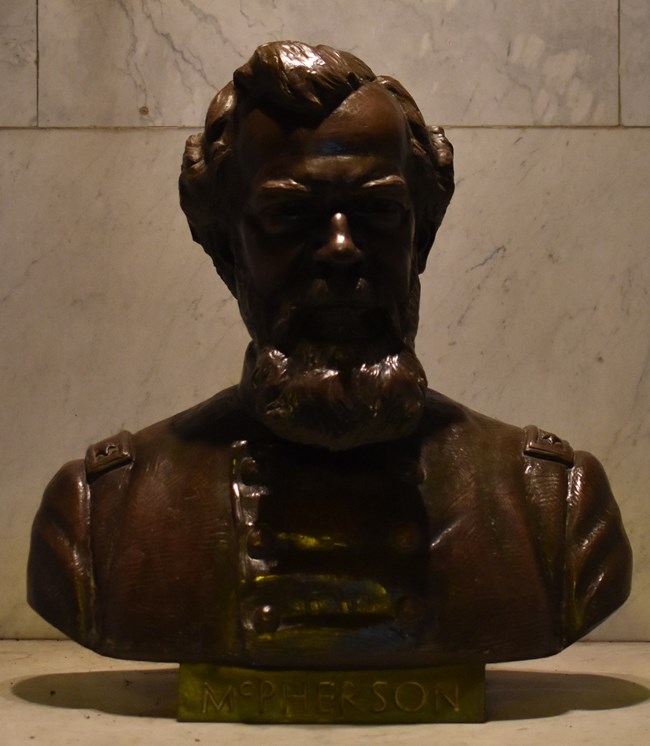
James B. McPherson
- Born on November 14, 1828, McPherson graduated from West Point in 1853 as first in his class - a class that also included Philip Sheridan
- After graduation as a member of the Corps of Engineers, McPherson participated in the building of Fort Delaware, improvements to New York Harbor, and fortifications on Alcatraz Island
- McPherson was transferred to the command of General Grant, and served as his Civil Engineer during the capture of Ft. Henry and Ft. Donelson
- In 1862, he was promoted to Major General of volunteers and was given command of the Seventeenth Corps in the Army of the Tennessee, serving under General Grant
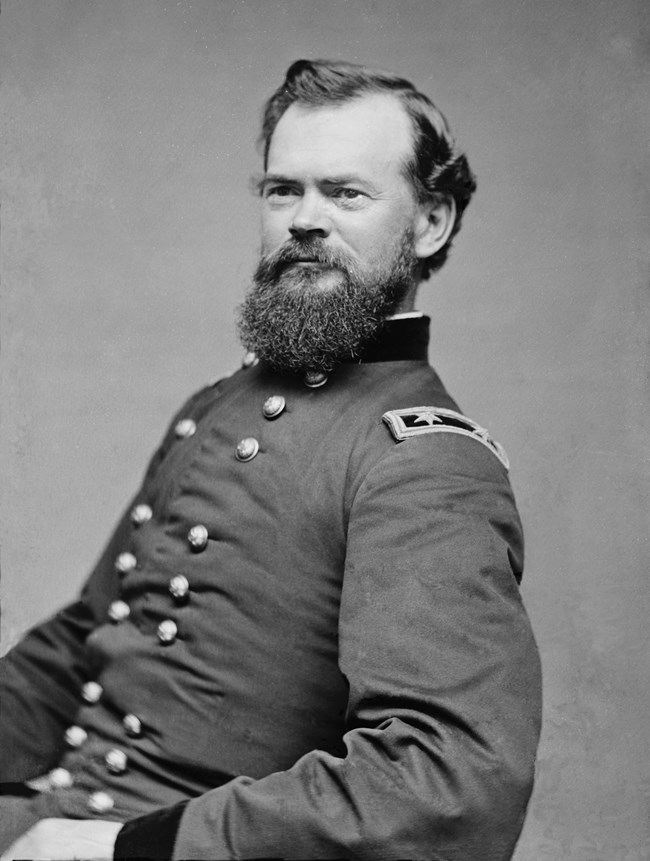
Library of Congress
- On July 22, 1864, General McPherson died from a bullet while out surveying the Confederate defenses during the Petersburg campaign
- Grant memorialized McPherson, calling him one of the army's "ablest, purest, and best generals." In addition, Sherman called McPherson "a man who was...qualified to heal national strife."
- According to Ron Chernow, Grant wrote to McPherson's grandmother and conveyed his "personal love for the departed. He formed some time one of my military family. I knew him well. To know him was but to love him...Your bereavement is great, but cannot exceed mine."
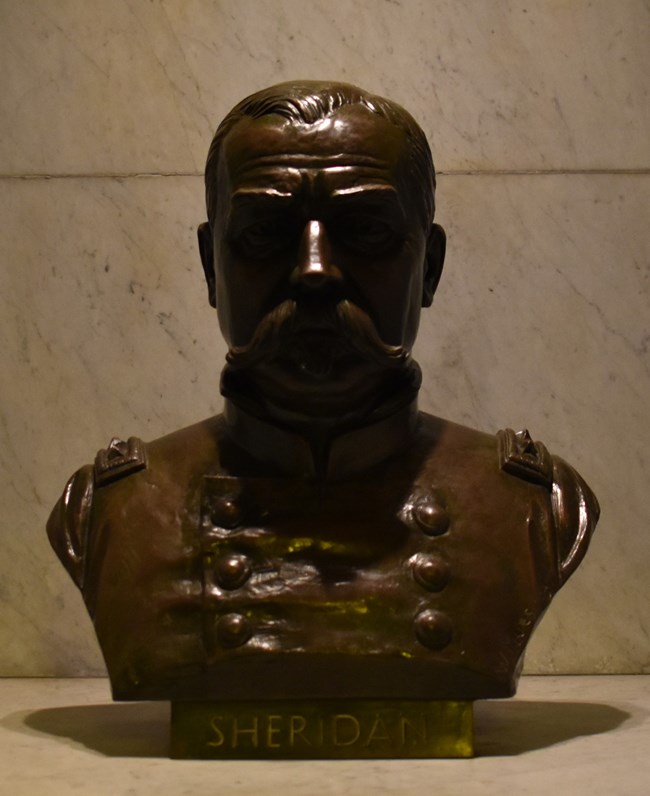
Philip H. Sheridan
- Born on March 6, 1861, Sheridan graduated from West Point in 1853, despite being suspended in 1851 for threatening a cadet
- Sheridan became infantry commander in the Army of the Cumberland, and his division played a key role in the counterattack that forced Confederate General Braxton Bragg to retreat to Georgia from Tennessee
- When Abraham Lincoln gave General Grant command of all Union armies, Grant appointed Sheridan his cavalry commander of the Army of the Potomac
- After Sheridan's victory against Confederate General J.E.B. Stuart during Grant's Overland Campaign, Grant sent Sheridan into the Shenandoah Valley to target 15,000 Confederate troops by destroying their farmland, which they were relying on to feed their troops
- To drive Lee and the Confederate army out of Petersburg, VA, Grant ordered Sheridan to seize a rail line that was providing supplies to Confederate General Robert E. Lee's army
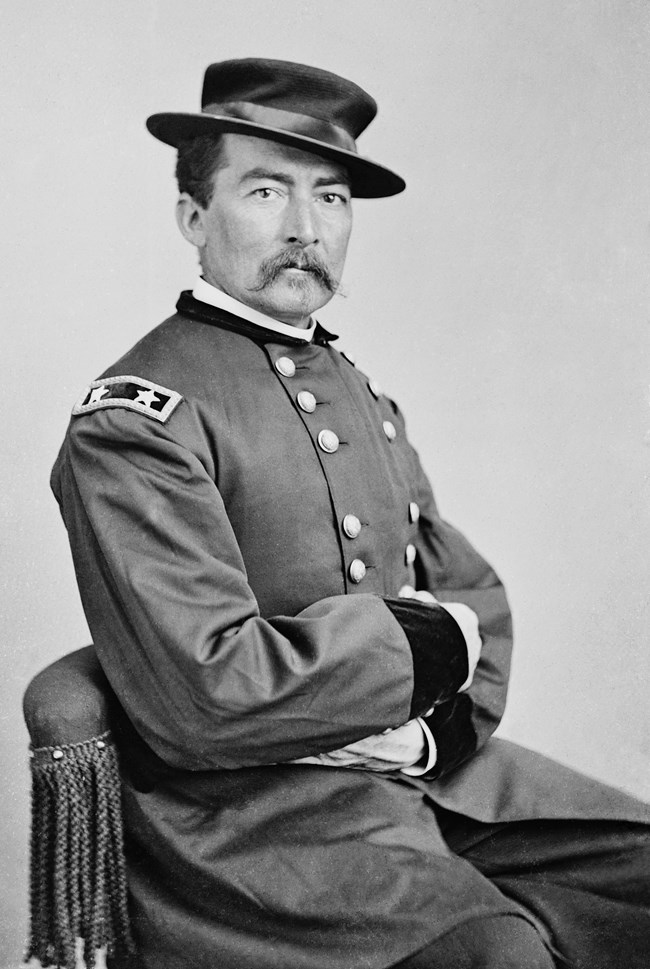
Library of Congress
- The day after the seizure of the rail line, Grant ordered the final assault of the Confederate army, surrounding Lee's army with the help of Sheridan and additional Union troops. Lee then surrendered to Grant at Appomattox Court House
- "He belongs to the very first rank of soldiers, not only of our country but of the world," Grant later commented. "I rank Sheridan with Napolean and Frederick and the great commanders in history."
- Sheridan succeeded William T. Sherman as general in chief of the U.S. Army in 1883, until his death in 1888
- Mt. Sheridan, which rises more than 10,000 ft. in Yellowstone National Park, is named after Philip H. Sheridan
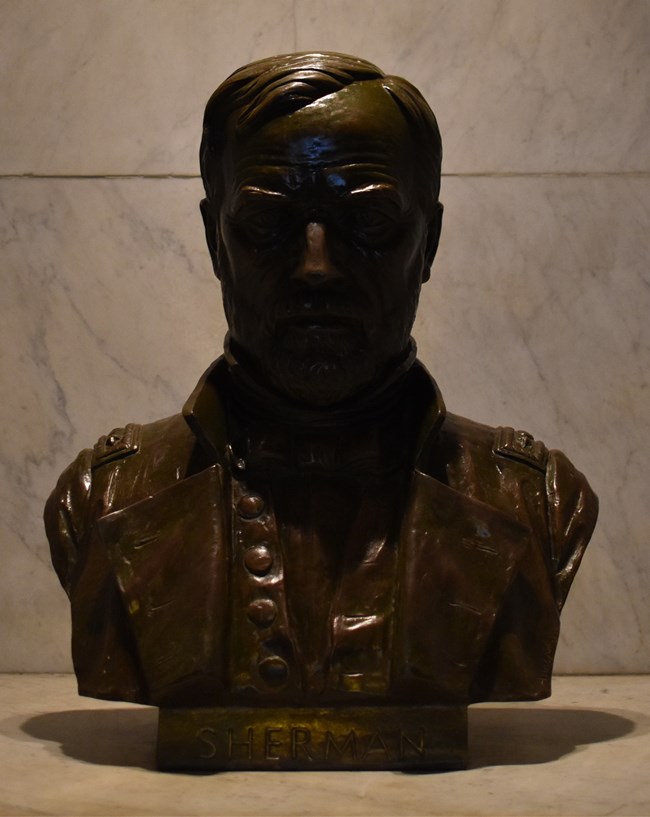
William T. Sherman
- William Tecumseh Sherman was born on February 8, 1820, and his middle name was chosen in admiration for Shawnee Chief Tecumseh
- Sherman graduated from West Point in 1840, and fought in the Second Seminole War in Florida before being stationed in California where he resigned his commission and spent time as a banker in San Francisco
- In 1859, Sherman accepted a position as superintendent of the Louisiana State Seminary of Learning and Military Academy - now Louisiana State University - be he resigned in 1861 after Louisiana seceded from the Union in January 1861
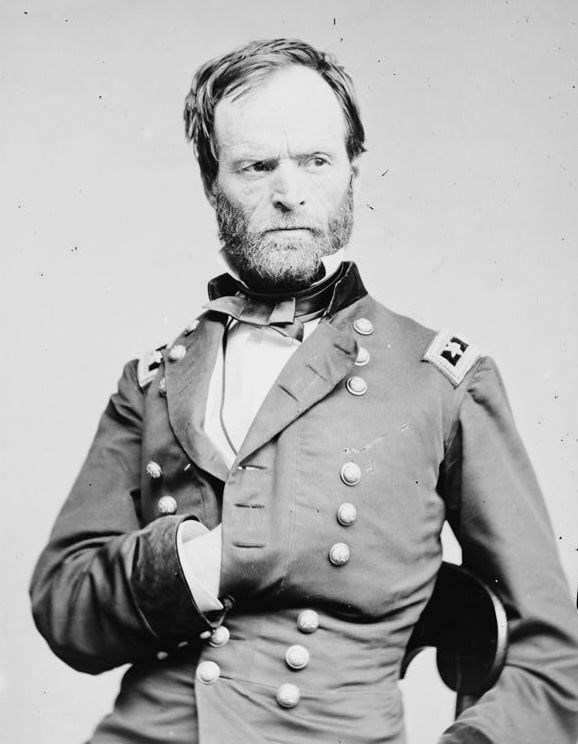
Library of Congress
- Sherman gained fame in his coordination with General Ulysses S. Grant in the successful campaign to capture Vicksburg, and in his capture of Atlanta and pursuit of Confederate General Joseph E. Johnston's army
- During Grant's presidency, Sherman became General of the Army from 1869-1883 where he oversaw the expansion of the nation westward
- Sherman died in New York City of pneumonia in 1891, and during his funeral procession former opponent General Joseph E. Johnston served as a pallbearer
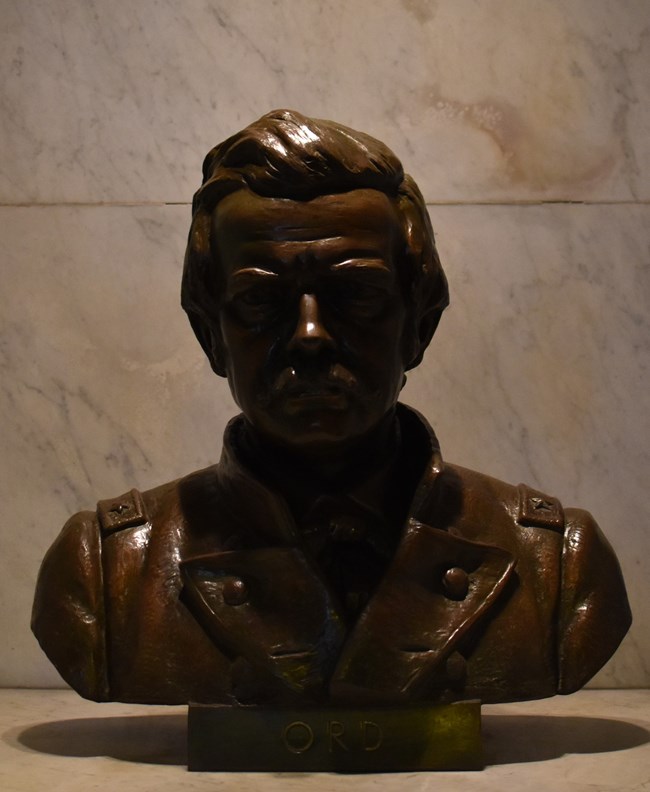
Edward Ord
- Born on October 18, 1818, Ord graduated from West Point in 1835, and was roommates with Sherman during his time at the military academy
- Ord took command of a division in the District of West Tennessee under Maj. General Ulysses S. Grant
- Grant won the Battle of Iuka with the help of General Edward Ord, and Grant was impressed by Ord's initiative
- On July 10, 1864 while at his headquarters in City Point, Grant wrote that he "would give more for him [Ord] as a commander in the field than most of the generals now in Maryland."
- Ord had his own army during the pursuit south of the Appomattox River and was entrusted by Grant with the V Corps
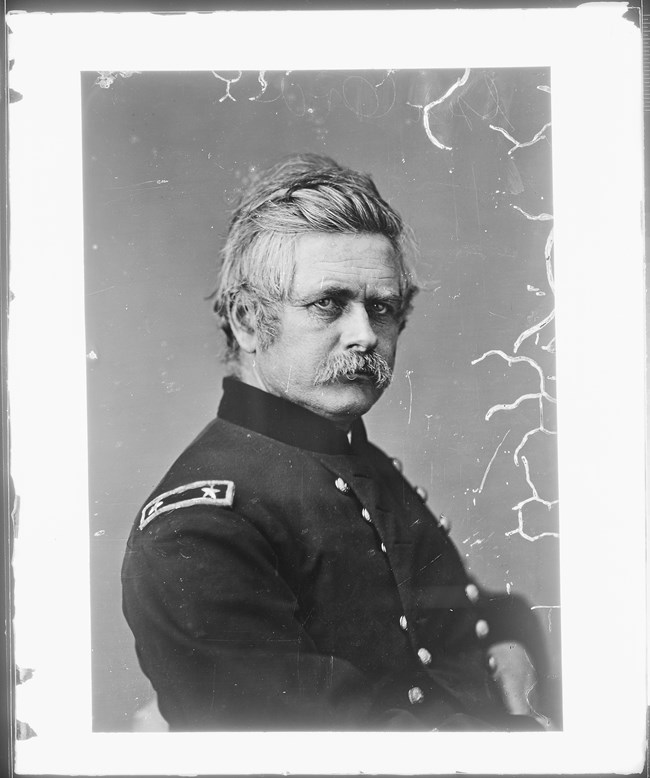
National Archives and Records Administration
- Ord was one of the officers present with Grant at the McLean House when Robert E. Lee signed the surrender of the Confederate Army at Appomattox
- During Reconstruction, Grant assigned Ord to command the Army of Occupation, headquarted in Richmond, VA
- Ord retired from the army in 1881 and General Sherman wrote that Ord "has had all the hard knocks of service, and never was on soft or fancy duty. He has always been called on when hard duty was expected, and never flinched."
- Later in 1881, Ord was hired by Ulysses S. Grant to build a railroad line from Texas to Mexico City as part of the Mexican Southern Railroad
- While in Mexico, Ord contracted yellow fever and passed away on July 22, 1883
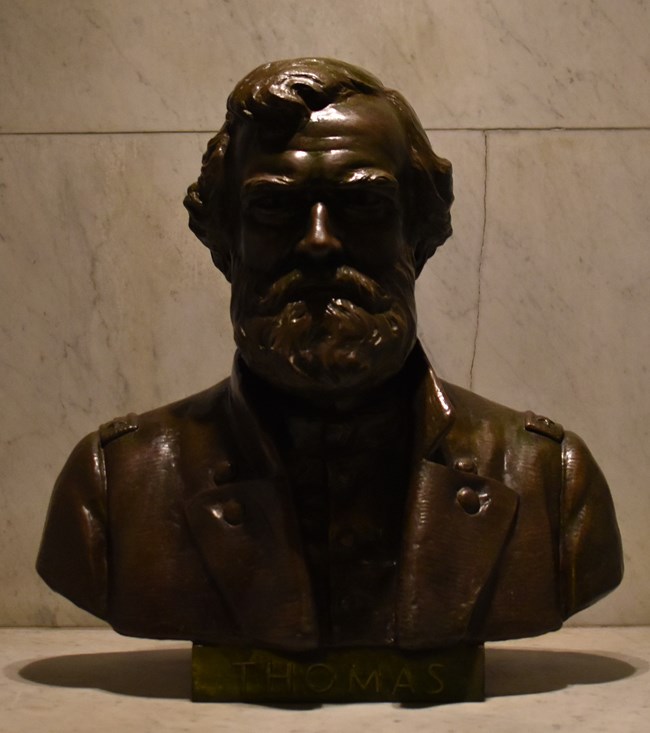
George H. Thomas
- Born on July 31, 1816, Thomas graduated from West Point in 1840 and had William T. Sherman as his roommate
- Despite being from Virginia, Thomas decied to join the Union army in the beginning of the Civil War, unlike Robert E. Lee who remained loyal to the south
- Thomas was promoted to Brigadier General and became in command of the Army of the Cumberland after his organized Union defenses withstood attacks during the conflict along Chickamauga Creek
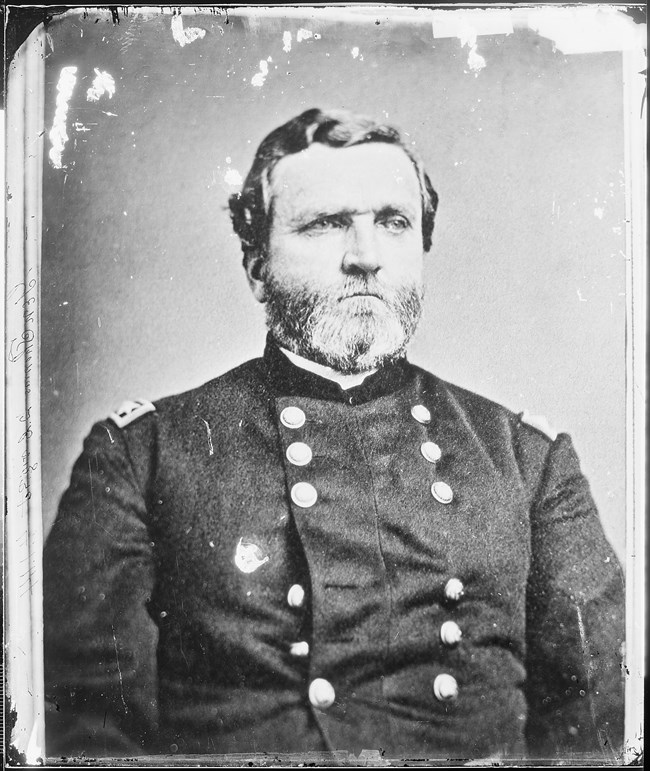
National Archives and Records Administration
- Thomas was made Major General after his success in dissolving the Confederate forces of General John B. Hood that were threatening Union communications
- Grant later called him "one of the great names of our history, one of the greatest heroes in our war, a rare and noble character in every way worthy of fame."
- Thomas was known as the "Rock of Chickamauga" due to his relentless defense in combat in September 1863
